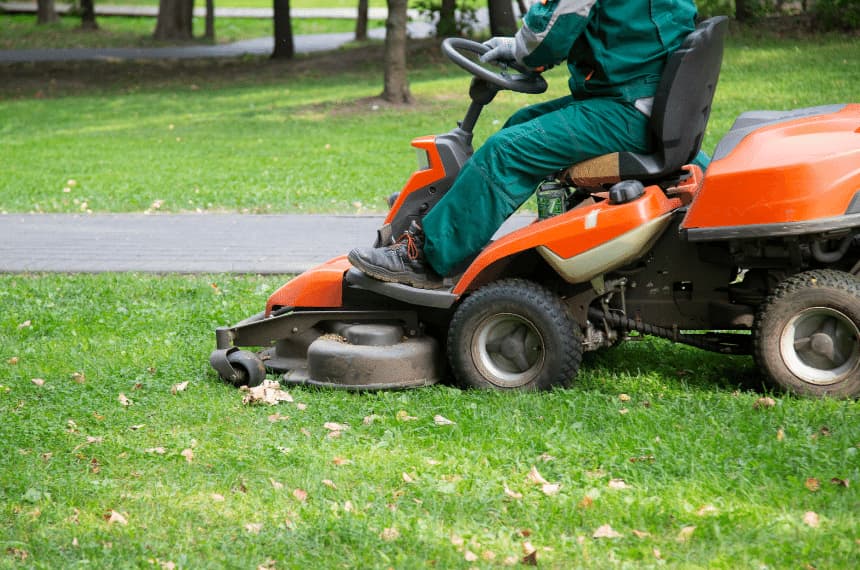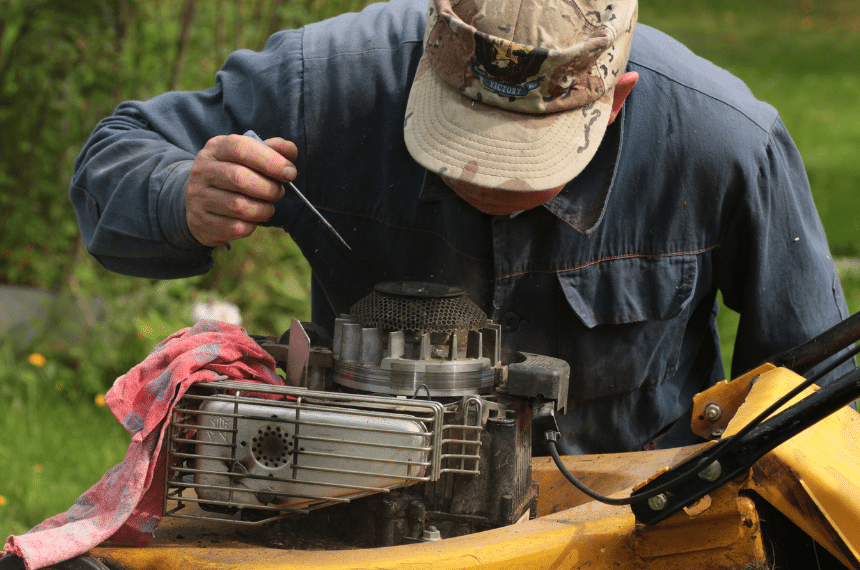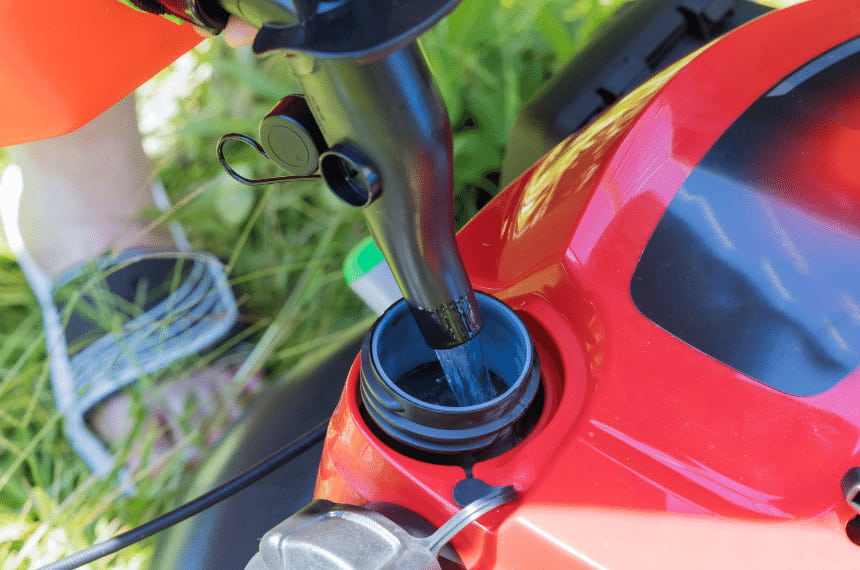In our gardening journey, it’s not just the plants that matter but also the tools that help us achieve that perfect lawn. We often grapple with one pivotal decision: selecting the right mower fuel. Make the wrong choice, and you risk engine damage; choose wisely, and you ensure your mower’s optimal performance and longevity. Different fuels have unique pros and cons, and being informed is essential.
What petrol do you put in a lawn mower?
Most commonly, regular unleaded petrol is the go-to choice for many Australian gardeners. However, the decision becomes more complex with the rise of ethanol blends like E10. Using the wrong fuel can lead to issues like engine corrosion, especially if stored improperly. On the other hand, the right fuel ensures smooth operation and a longer engine life. It’s a choice that drives the health of our mowers.
Understanding different fuel types
Navigating the world of fuel types can feel like a maze for many of us. Each type comes with its unique set of characteristics, impacting how our mowers function and last. By delving deeper into the specifics, we can make informed choices, ensuring our trusty mowers get the best they deserve.
Regular unleaded petrol
Regular unleaded petrol is often the first choice for many Australian gardeners, and for good reason. It’s a tried and tested fuel that has powered our mowers for years. Comprising a straightforward blend without the added complexities of ethanol or higher octanes offers consistent and reliable performance. Most lawn mowers are designed to run efficiently on this fuel type, making it a safe bet for ensuring optimal engine health and longevity. The classic choice rarely lets us down in our gardening endeavours.
Ethanol blends (E10)
E10 is more than just a buzzword in the fuel world; it’s a blend gaining traction, especially at the pumps. Comprising 90% regular unleaded petrol and 10% ethanol, E10 is often seen as a more environmentally friendly option. However, while it might be kinder to the planet, it’s not always the best mate for our mowers. The ethanol component can absorb moisture from the atmosphere, leading to potential engine corrosion over time. While some modern mowers are designed to handle E10, knowing its effects and ensuring our equipment is compatible are crucial. It’s all about striking the right balance for the health of our mowers and the environment.
Higher octane fuels
Venturing into the realm of higher-octane fuels, we find options that are often associated with high-performance vehicles. But do our mowers need them? Higher octane fuels, such as 95 or 98, are designed to resist knocking in engines, ensuring smoother combustion. While this might benefit that sports car you’ve been eyeing, it can be overkill for our everyday mowers. In fact, using these fuels without necessity can lead to increased costs without any tangible benefits in performance. However, the manufacturer might recommend a higher octane in certain situations, especially with high-end or specialised mowers. Knowing our equipment and choosing wisely is essential, ensuring we’re not just burning money without reason.
What fuel should I use in my lawn mower?
The quest for the ideal fuel for our mowers can seem daunting, but when we break it down, it’s all about understanding our equipment and priorities. For the majority of standard mowers, regular unleaded petrol is the champion. It’s reliable, widely available, and suits most engine types. If you’re leaning towards E10 for its environmental benefits, ensure your mower is compatible to avoid unwanted engine woes. And while higher octane fuels might sound fancy, they’re best reserved for specific mowers requiring them. Always consult your manufacturer’s recommendations, and consider your mower’s environmental and long-term health. After all, the right fuel choice is the key to many more seasons of lush, green lawns.
Yard Work recommendation: Best petrol for 4-stroke mower
Regarding 4-stroke mowers, a staple in many Australian backyards, our recommendation at Yard Work is clear: stick with standard 91-octane unleaded petrol. Over the years, we’ve seen that this fuel offers a consistent and reliable performance for these mowers. It provides the right balance of efficiency without the potential complications arising from ethanol blends or higher octane fuels. Moreover, it’s readily available at most service stations, making it a convenient choice. Based on our experiences and insights from experts like those at Small Engine Warehouse Australia, it’s the safest bet for ensuring your 4-stroke mower runs smoothly season after season.

If you want to learn more about 4-stroke mowers, check out our best petrol lawn mower roundup here!
Pros and cons of each fuel type for lawn mowers
Choosing the right petrol for your lawn mower is crucial to ensuring optimal performance and extending the life of your machine. Here is a breakdown of the most common fuel types and their respective advantages and disadvantages:
| Fuel Type | Pros | Cons | Example Impact |
|---|---|---|---|
| Regular Unleaded Petrol (91 Octane) | – Widely available and often the most affordable option. – Suitable for most standard lawn mower engines without the need for modifications. – Low risk of engine damage if used correctly. |
– Shorter shelf life compared to stabilised fuel options, leading to potential fuel degradation if stored for extended periods. – Lacks additives that protect against engine buildup or carbon deposits. |
Regular unleaded petrol works well for occasional mowing but may require stabilizers if the fuel will sit unused for months. |
| Ethanol Blends (e.g., E10) | – More environmentally friendly, as ethanol is a renewable resource that reduces greenhouse gas emissions. – Often slightly cheaper than premium fuel options. |
– Attracts moisture, leading to potential corrosion of metal parts in the fuel system. – Can degrade rubber and plastic components over time, increasing maintenance needs. – Requires immediate use as ethanol-rich fuels deteriorate faster than pure petrol. |
Mowers with E10 might experience issues if left idle for extended periods without proper draining or stabilizing. |
| High-Octane Fuels (95/98 Octane) | – Burns cleaner, leading to fewer carbon deposits and reduced engine buildup. – Often includes premium additives that improve performance and protect internal components. – Provides smoother operation in high-performance or commercial-grade engines. |
– Higher cost compared to regular unleaded petrol. – May offer negligible benefits for standard mower engines designed for lower-octane fuel. |
High-octane fuels are ideal for commercial mowers that undergo heavy use but might not justify the cost for smaller, residential models. |
Fuel additives and stabilisers
Venturing into fuel additives and stabilisers, we find ourselves amidst a world of solutions designed to enhance our mower’s performance and longevity. Over the years, we’ve come to appreciate their role, especially when dealing with the quirks of ethanol-blended fuels. Let’s dive into what they bring to the table:
- Combatting ethanol’s moisture problem: One of the primary roles of fuel stabilisers is to counteract ethanol’s tendency to absorb moisture. By doing so, they prevent water from settling at the bottom of the fuel tank. This common issue can lead to engine corrosion and starting problems.
- Extending fuel shelf life: We’ve all been there – storing fuel for the off-season, only to find it degraded when needed. Additives can extend the life of both regular and ethanol-blended fuels, ensuring they remain fresh for longer.
- Enhancing performance: Some additives are designed to clean the fuel system, removing deposits that can hinder performance. The result? A smoother-running mower that’s more efficient.
- Protecting the engine: Beyond just the fuel system, certain additives protect the engine, reducing wear and tear and ensuring a longer lifespan.
- Economic benefits: While there’s an initial cost to purchasing these additives, the long-term savings in reduced maintenance and repair costs can be significant.
In our gardening journey, we’ve found that while ethanol-blended fuels come with challenges, the right additives and stabilisers can make a world of difference. They bridge the gap, allowing us to enjoy the benefits of ethanol without the associated headaches. It’s like having a trusty sidekick, ensuring our mowers are always at their best.
Fuelling lawn mower: Best practices
Fuelling our mowers might seem straightforward, but over the years, we’ve realised that a little care ensures our equipment’s longevity. Here’s our step-by-step guide, honed from years of experience, on fuelling your mower the right way:
- Check the manual: Always refer to your mower’s manufacturer manual before anything else. It’ll provide specific recommendations on the fuel best suited for your machine.
- Safety First: Ensure the mower is on a flat, stable surface. If you’ve just used the mower, wait for the engine to cool down. Also remember that hot engines and fuel don’t mix well. We recommend keeping a fire extinguisher nearby, just in case.
- Use a Clean Funnel and Container: Always use a clean funnel and container when refuelling. Any debris or contaminants can cause engine problems down the line.
- Don’t Overfill: Fill the tank to about 95% capacity. This allows for fuel expansion, especially on hot days, preventing spillage or leakage.
- Tightly Seal the Fuel Cap: Once done, ensure the fuel cap is tightly sealed to prevent any evaporation or contamination.
- Regularly Check for Leaks: After refuelling, check for any signs of leaks. If you spot any, address them immediately.
- Dispose of Old Fuel Safely: If you have old or stale fuel, don’t just pour it into your mower. Dispose of it safely, following local regulations.
- Clean Up Any Spills: If you spill any fuel, clean it up immediately. It’s not just a fire hazard but can also harm your lawn.
- Regular Maintenance: Regularly check and clean your mower’s fuel system. It ensures optimal performance and reduces the chances of any fuel-related issues.
Fuelling our mowers might seem like a small task in the grand scheme of gardening, but these little things often make the most significant difference. By following these best practices, we ensure our mowers are always ready to give us that perfect lawn, season after season.
A note on checking oil levels
Oil and fuel go hand in hand to ensure our mower’s optimal performance. Think of them as the dynamic duo that powers your machine. Here’s why they’re crucial:
- Lubrication: Oil lubricates the engine’s moving parts, reducing wear and tear. Without adequate oil, the engine can overheat and wear out faster.
- Cooling: Along with lubrication, oil helps cool down the engine by dispersing heat.
- Checking oil levels: Before every use, checking the oil level is a good habit. Ensure the mower is on a level surface, remove the dipstick, wipe it clean, reinsert it, and then check the level. If it’s low, top it up with the recommended type of oil.
- Changing oil: Oil can get dirty over time and lose effectiveness. As per the manufacturer’s recommendations, regularly changing the oil ensures your engine remains in tip-top shape.
In our gardening journey, we’ve found that a little attention to oil levels and quality can make a world of difference. It’s the secret sauce that, along with the right fuel, ensures our mowers are always at their peak performance.

Storage for longevity of fuel
Ah, the age-old question of how long our fuel stays good for and how best to store it. Over the years, we’ve seen many gardeners caught out by stale fuel, leading to a mower being more reluctant to start than a teenager on a Monday morning. Here’s what we’ve learned about the longevity of different fuels and how to store them:
- Regular unleaded petrol: This trusty fuel remains fresh for about a month. After that, it degrades, losing its combustibility and potentially harming your mower’s engine.
- Ethanol blends (E10): The shelf life of E10 is even shorter, often lasting only a few weeks. The ethanol component can absorb moisture from the air, leading to separation and potential engine issues.
- Higher octane fuels: These tend to last longer than regular unleaded, but using them within a month or two is still a good practice.
Storage tips
- Fuel stabilisers: If you know you won’t use your fuel for a while, consider adding a fuel stabiliser. It can extend the life of your fuel, making it last several months without degrading.
- Store in a cool, dry place: Heat and moisture are enemies of stored fuel. Keep your fuel containers in a cool, dry place, away from direct sunlight.
- Use a dedicated fuel container: Always store fuel in a container designed for it. These containers are sealed to prevent moisture ingress and evaporation.
- Off-season equipment storage: If you’re storing your mower for an extended period, like over winter, it’s a good idea to drain the fuel or add a stabiliser. Also, consider running the mower until it’s out of fuel. This ensures there’s no stale fuel left in the system, which can gum up come springtime.
- Regularly check stored fuel: Before using stored fuel, check it. If it smells off or looks cloudy, it’s best to dispose of it safely and get fresh fuel.
A little foresight when it comes to fuel storage can save a lot of headaches down the line. By ensuring our fuel remains fresh and our equipment is stored correctly, we’re all set for a hassle-free start to the next gardening season.
Final thoughts
Choosing the right fuel and caring for it might seem like a small cog in the vast machinery of gardening, but its impact is profound. The right choice ensures our mowers run smoothly, our gardens flourish, and our efforts bear fruit. As we’ve journeyed through the nuances of fuels, additives, and best practices, one thing stands clear: a little knowledge and care go a long way. So, as we gear up for another season of lush lawns and blooming flowers, let’s fuel our passion with the same diligence we fuel our mowers. Here’s to many more seasons of green perfection!
FAQs
How often should I clean my lawn mower’s fuel system?
Regular maintenance is key to a mower’s longevity. It’s recommended to clean the fuel system at least once a season or after every 50 hours of use, whichever comes first.
Can I mix different types of fuel in my lawn mower?
It’s best to avoid mixing different fuels. Stick to the manufacturer’s recommendation and always use fresh fuel for optimal performance.
What are the signs of bad or stale fuel in my lawn mower?
Signs include difficulty starting the mower, uneven running, stalling, or a foul odour from the exhaust. If you suspect stale fuel, it’s best to drain and replace it.
How can I dispose of old or stale fuel from my lawn mower?
Never pour old fuel down drains or into the ground. Check with local waste disposal sites or recycling centres, as many offer safe disposal options for old fuel.
Are electric lawn mowers a viable alternative to petrol-powered ones?
Both corded and battery-operated electric mowers are gaining popularity due to their eco-friendliness and reduced maintenance. They’re especially suitable for smaller lawns and gardens.






